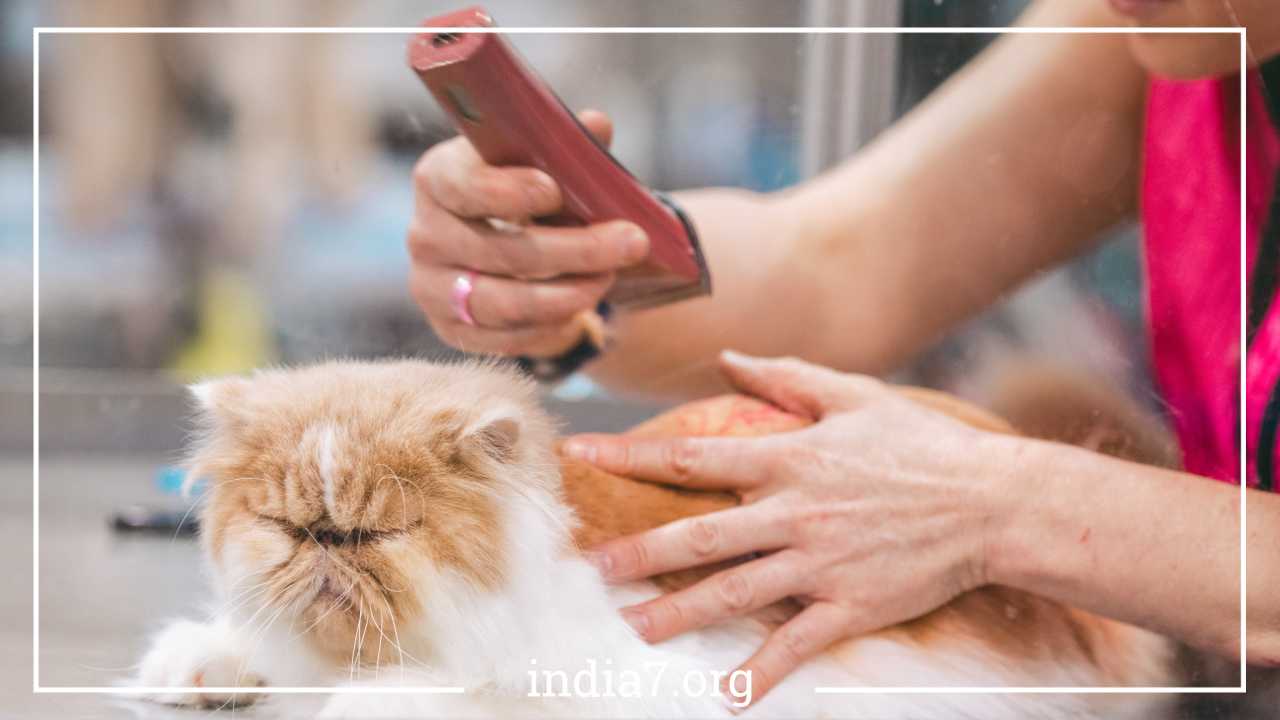Cat Grooming: Tips, Tools, and Techniques for Feline Care

Cat Grooming
Cats are known for their cleanliness and self-grooming habits, but as a responsible cat owner, it’s crucial to take an active role in ensuring your furry friend stays clean and healthy. Grooming is not just about aesthetics; it’s a fundamental aspect of cat care that promotes their well-being, prevents health issues, and strengthens the bond between you and your pet.
In this comprehensive guide, we will delve into the importance of grooming, the tools and techniques you can use, and how to make grooming a positive experience for both you and your cat.
Why Grooming Matters
Grooming is an essential part of a cat’s life, and it serves multiple purposes beyond just looking good. Here are some key reasons why grooming your cat is vital:
- Hairball Prevention: Cats are meticulous groomers, but their self-grooming can lead to the ingestion of loose fur, which can form hairballs in their stomach. Regular brushing helps remove loose hair, reducing the risk of hairballs and associated health problems.
- Skin and Coat Health: Grooming stimulates blood flow to the skin, distributes natural oils, and removes dead skin cells, promoting a healthy and shiny coat. It also prevents matting and tangling, which can be painful for your cat.
- Bonding Opportunity: Grooming provides an excellent opportunity for you to bond with your cat. When done correctly and gently, it can be a pleasant experience for both you and your pet.
- Early Detection of Issues: While grooming, you can spot skin irritations, lumps, bumps, or unusual changes in your cat’s body. This early detection can be critical in identifying potential health issues.
- Ear and Eye Care: Grooming includes checking your cat’s ears and eyes for any signs of infection, discharge, or other problems. Regular inspection can help prevent ear mites and eye infections.
- Dental Health: Examining your cat’s mouth during grooming allows you to monitor their dental health. You can watch for signs of dental problems, such as tartar buildup or gum disease.
- Claw Maintenance: Trimming your cat’s claws as part of grooming helps prevent overgrowth and reduces the likelihood of scratches to you and your furniture.
Now that we understand why grooming is essential, let’s explore the tools and techniques you can use to keep your cat clean and happy.
Grooming Tools
To groom your cat effectively, you’ll need the right tools. Here are some common grooming tools and their purposes:
- Brushes: Brushes come in various types, such as bristle brushes, slicker brushes, and deshedding tools. The choice of brush depends on your cat’s coat length and texture. Bristle brushes are suitable for short-haired cats, while long-haired cats may require slicker brushes or deshedding tools to remove loose fur and prevent matting.
- Grooming Glove: A grooming glove is an excellent alternative to traditional brushes. Many cats find the sensation of being petted with a grooming glove soothing. It’s particularly useful for cats who are sensitive to traditional grooming tools.
- Combs: Combs, such as flea combs and fine-toothed combs, are handy for removing tangles, debris, and pests like fleas or flea eggs from your cat’s coat.
- Nail Clippers: Nail clippers designed for cats help you trim your cat’s claws safely. Regular nail trimming prevents overgrowth and reduces the risk of scratches.
- Ear Cleaning Solution: A cat-safe ear cleaning solution and cotton balls or pads are essential for keeping your cat’s ears clean and free from dirt or wax buildup.
- Toothbrush and Toothpaste: Dental care is crucial for cats. Use a cat-specific toothbrush and toothpaste to maintain your cat’s oral hygiene.
Now, let’s dive into the grooming process and tips for each step.
The Grooming Process
Grooming your cat involves several steps, each of which contributes to their overall well-being. Here’s a step-by-step guide on how to groom your cat effectively:
1. Brushing
- Select the Right Brush: Start by choosing the appropriate brush for your cat’s coat type. Consult your veterinarian or a professional groomer if you’re unsure.
- Create a Calm Environment: Find a quiet, comfortable, and well-lit space for grooming. Ensure your cat is relaxed before you begin.
- Introduce the Brush Gradually: If your cat is not used to being brushed, introduce the brush slowly. Let them sniff and investigate it.
- Brushing Technique: Begin brushing gently from your cat’s head, moving towards their tail, following the natural direction of their fur growth. Use gentle, slow strokes to prevent discomfort or pulling. Be patient, especially if your cat is anxious.
- Check for Lumps and Irritations: While brushing, pay attention to your cat’s skin. Look for lumps, bumps, redness, or any signs of skin irritations. Early detection is crucial for addressing potential health issues.
- Avoid Sensitive Areas: Be cautious around your cat’s face and paws, as these areas are sensitive. Most cats do not enjoy having their face brushed.
- Frequency: Short-haired cats can be groomed weekly, while long-haired breeds may require daily brushing to prevent matting and tangles.
2. Ear Care
- Inspect the Ears: During grooming, take a moment to inspect your cat’s ears. They should be clean, pink in color, and free from excessive wax or discharge.
- Ear Cleaning: If you notice dirt or wax buildup, use a cat-specific ear cleaning solution and a cotton ball or pad to gently clean the ears. Avoid inserting anything into the ear canal, as it can damage the eardrum.
- Ear Mites: Keep an eye out for signs of ear mites, such as excessive scratching or head shaking. If you suspect ear mites, consult your veterinarian for treatment.
3. Eye Care
- Check the Eyes: Examine your cat’s eyes for any signs of discharge, cloudiness, redness, or irritation. Healthy eyes should be clear and bright.
- Eye Cleaning: If your cat has discharge or tear stains around their eyes, you can clean them with a damp, soft cloth. Be gentle and avoid touching the eyeball.
- Consult Your Vet: If you notice persistent eye issues, consult your veterinarian, as they could indicate an underlying health problem.
4. Dental Care
- Monitor Dental Health: While grooming, take a moment to check your cat’s teeth and gums. Look for signs of tartar buildup, gum inflammation, or bad breath.
- Dental Hygiene: Brush your cat’s teeth regularly using a cat-specific toothbrush and toothpaste. Start slowly and ensure your cat is comfortable with the process.
- Professional Dental Care: For advanced dental issues, consult your veterinarian for professional dental cleaning.
5. Claw Maintenance
- Trimming Claws: Regularly trim your cat’s claws to prevent overgrowth. Use cat-specific nail clippers or grinders.
- Nail Trimming Tips: Be cautious when trimming claws to avoid cutting the quick, which can cause bleeding and pain. If you’re unsure, ask your veterinarian or a professional groomer to demonstrate proper technique.
- Scratching Posts: Provide scratching posts or pads to help your cat naturally wear down their claws.
Positive Reinforcement and Patience
Throughout the grooming process, use positive reinforcement to create a pleasant experience for your cat. Here are some tips:
- Praise and Treats: When your cat remains still and cooperative during grooming, offer praise and treats as rewards. Positive reinforcement helps your cat associate grooming with a positive outcome.
- Take Breaks: If your cat becomes agitated or uncooperative, do not force the grooming session. Instead, take a break and try again later. Gradually increase the duration of grooming sessions as your cat becomes more accustomed to the process.
- Stay Calm: Remain calm and patient during grooming. Cats can sense your emotions, so a calm and soothing demeanor will help keep your cat relaxed.
- Respect Boundaries: Pay attention to your cat’s signals. If they show signs of discomfort or stress, such as hissing, growling, or swatting, give them space and try again when they are more at ease.
Conclusion
Grooming your cat is a crucial aspect of responsible cat ownership. It not only keeps your cat clean and healthy but also strengthens your bond and provides opportunities for early detection of health issues. By selecting the right grooming tools, creating a calm environment, and using positive reinforcement, you can make grooming a positive experience for both you and your feline companion.
Remember that each cat is unique, and their grooming needs and preferences may vary. Be patient, flexible, and attentive to your cat’s cues. If you ever have questions or concerns about your cat’s grooming routine or health, consult your veterinarian or seek guidance from a professional groomer. With love and care, grooming can become a cherished part of your cat’s life, ensuring they lead a happy and healthy existence.



